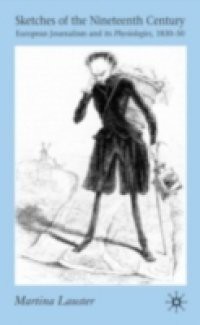At the height of the journalistic revolution, between 1830 and 1848, sketches in words and images emerged as a literary genre in their own right. Their most characteristic form of publication was the collectively produced, serialised city portrait, made up of a multitude of contributions from writers and graphic artists. Self-consciously ephemeral and self-consciously modern, these sketch collections constitute a kaleidoscope of nineteenth-century mores.Taking issue with Walter Benjamin's influential critique of the flaneur and of feuilleton writing about the city, this important new study reveals the central significance of metropolitan sketches within nineteenth-century culture. As a dynamic form of cognition, sketches transform models of visual and printed media (panorama and encyclopedia) and of life science (physiology) into a unique kind of sociology, presenting a fascinating self-critique of the middle class on the brink of industrial modernity.

